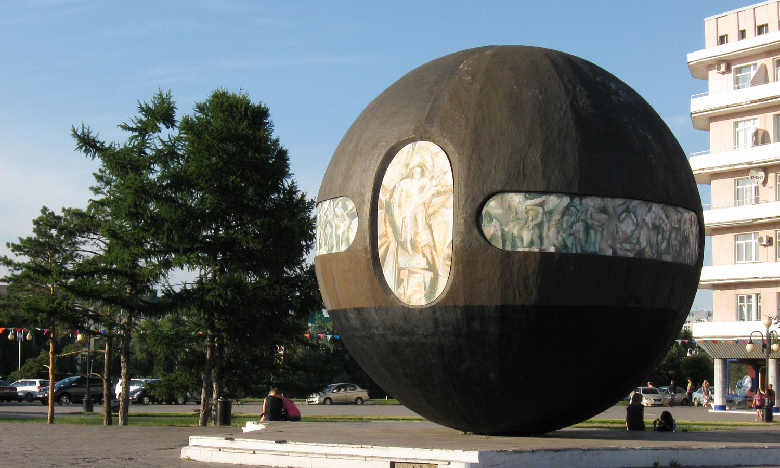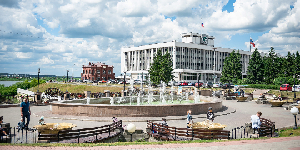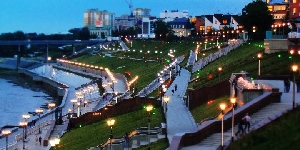
Sculptor_Vasily_Trokhimchuk
Geography. The region stretches for 600 km from south to north and for 300 km from west to east. It is located on the West Siberian Plain. In the south of the region, there are steppes blending into forest steppes, forest and swampy taiga in the north. The area of the Omsk Region is 141,140 km². It borders the regions of Russia such as the Tyumen, Novosibirsk, and Tomsk Regions. The south of the region is crossed by the state border between Russia and the Republic of Kazakhstan.
Climate. Continental and severely continental.
Average temperature
- -19… -20°C in January
- +17…+18°C in July
Population
Economy. The region’s main industries are military, aerospace and agricultural engineering, petrochemical, light, and food industries.
Logistics.
- Several major highways (Р254, М38, Р402).
- International Airport named after Dmitry Karbyshev
- The main railway station is Omsk-Passazhirskaya
Tourist attractions
- The Batakovo Archeological Park occupies an area of 15,000 ha. In the district, the researchers discovered more than a hundred archeological sites of different epochs, including the Stone Age. The objects discovered include armor, jewelry, weapons, and ceramics. There are also clearly visible graves and the ancient settlement where you can see how the streets and fortress were located.
- Lake Ebeyty is the largest salt-water lake in the region. Its area reaches 11,000 ha (it changes essentially depending on the season). The maximum depth is 2 meters. The lake was assigned the status of natural site.
- The Spasskaya Church in Tara was built in the second half of the 18th century. It is the oldest stone building in the region, erected in the style of the Siberian Baroque, that has preserved its original decorative components. It is a major national architectural monument (church architecture).
The capital – the city of Omsk – is one of 16 Russian cities with a million-plus population. Its population is 1,110,836 people. It is located at the confluence of the Siberian riversк Irtysh and Om. Founded in 1716, today it is a major scientific, cultural, sports, and industrial center. Omsk is the venue for numerous scientific, cultural, sports, and historical forums and festivals. There are a lot of parks and public gardens, a yacht club, and a hippodrome in the city.




